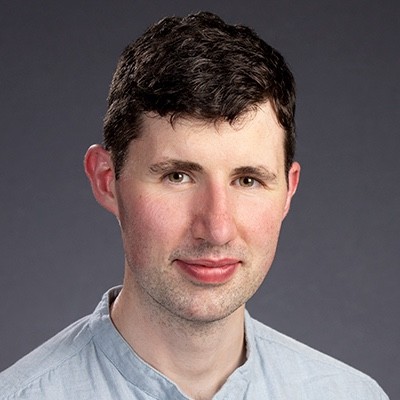The ‘Great Competition’: Bodybuilding’s First Ever Show
Given the number of bodybuilding shows held every month, let alone every year, in places like the UK and USA, it’s difficult to imagine a time when their bodybuilding shows were relatively unheard of. Yes, vaudeville shows where performers would show off their muscles had been established in the 1800s, but it took some time for a dedicated bodybuilding show to emerge.

Perhaps unsurprisingly, it was Eugen Sandow, the man many credit as the Father of Modern Bodybuilding (1), who helped initiate the first ever bodybuilding competition in the Royal Albert Hall in 1901. Billed as ‘the Great Competition’ (2), the show helped kickstart the bodybuilding craze and bring about a world of Mr. Americas, Universes, and Olympias.
Preparation, Preparation, Preparation

Eugen Sandow, the most famous physical culturist of the time, organised the event
The Great Competition was not created overnight. In fact, it was three years in the making.
As early as July 1898, Sandow would write in his own physical culture magazine about an upcoming physique competition in the UK. The then-31-year-old Sandow was keen to spread the physical culture message even further across the UK and “afford encouragement to those who are anxious to perfect their physiques” (3).

Sandow’s 1901 Bronze Trophy re-emerged in 1950 as the Mr. Olympia Trophy
Encouragement is one motivator, but so is cash. The man who placed first would receive not only a gold statuette of Sandow but also a purse amounting to 1,000 guineas (about $5,000 at the time for our US friends). 2nd place would receive a silver statuette and 2,500 guineas, while 3rd place would receive a bronze statuette.
The statues themselves were inspired by a statue given to Sandow by William Pomeroy in 1891 during Sandow’s music hall days. Over the years, Sandow has commissioned several copies of the Statuette in bronze and spelter. It seemed only fitting that such copies would make up the trophies.
Separating the Wheat from the Chaff
The 1890s were perhaps the height of Sandow’s popularity in the United Kingdom, and in light of this, his announcement that he was holding a physique competition was met with great enthusiasm. Soon, the Prussian was inundated with applications from aspiring muscle men across England. Knowing that it would be impossible to have every applicant compete at the same time, Sandow and his business partners initiated a series of local bodybuilding shows across Great Britain.
It was a bold move. Bodybuilding shows had never been attempted on such a scale, and there was no guarantee of success. In the interest of fairness, Sandow spent three years attending each of the regional competitions, awarding gold, silver, and bronze medals to those with the best physiques. A regional win would allow competitors to compete in the Grand Competition in 1901.
What did Sandow look for in a physique?
Sandow made it clear to both competitors and his fellow judges that prizes would not be awarded to the men with the largest physiques. Instead, Sandow devised the following check list based on his own ideals for the perfect physique
- General development
- Equality or balance of development
- The condition and tone of the tissues
- General health
- Condition of the skin
Building the Hype
After three years of adjudicating county championships, Sandow finally announced the date for the ‘Great Competition’.
On September 14, 1901, men from across England would travel to the Royal Albert Hall in London to compete for the biggest (and indeed the only) prize in bodybuilding. The Royal Albert Hall was the biggest arena London had to offer, seating over 15,000. To the delight of Sandow, soon after his announcement, it was clear his show would be a sellout.

A contemporary depiction of the Royal Albert Hall
Always the astute businessman, Sandow publicly declared that all proceeds from the Great Competition would go to the “Mansion House Transvaal War Relief Fund,” a war fund established for those soldiers fighting in the Second Boer War (1899–1902) in modern-day South Africa.
Showtime
At 8pm on September 14, the Great Competition began with a performance by the Irish Guards in memory of slain US president William McKinley, who had been assassinated just one week prior. The highly emotive performance brought the entire audience to its feet with reporters noting that the large American contingent in the audience that night were “unmistakably touched by the earnest and solemn demeanor of all.”
Once the music stopped, Sandow had the house lights extinguished. Bursting from the darkness came 20 powerful spotlights, illuminating the march of 50 boys from the Watford Orphan Asylum. A display that “aroused the audience to a great pitch of excitement.”

The Great Competition featured everything from wrestling to fencing
After this came athletic displays, from wrestling to fencing. Steadfast in his belief that the audience came to be entertained, Sandow left no stone unturned when it came to variety. Thankfully, soon the time came when 60 competitors strode into the arena to the tune of ‘March of the Athletes’, a composition written by Sandow.
Let the Judging Begin
They stood on stage. 60 men in black tights, black jockey belts, and leopard skins had the finest muscle England had to offer. Members of the audience looked on in admiration. The following day, a journalist present noted that “to stand in their ranks was a distinction.”

Photo: Lawes, Doyle and Sandow judging the contestants
The judges of the night were Sir Charles Lawes, a famous sculptor and amateur athlete, and Dr. Arthur Conan Doyle, the creator of the Sherlock Holmes series. In the event of a disagreement between the two guest judges, Sandow would decide the winner. The fact that neither of the men had any great experience in bodybuilding mattered little. Their names gave credibility to the competition.
Slowly, the judges walked towards each contestant, closely examining the sinews of each man. Soon after, the group of 60 men was cut to 12 finalists. An intermission was then called to give the judges time to reflect.
When the curtains were raised once more, a 34-year-old Sandow stood on stage for the day’s last performance. Displaying his remarkable talents, Sandow would tear packs of cards in two, lift weights overhead, and dazzle the audience. For five minutes, spectators gave Sandow a standing ovation once he had finished, and once they were done, the competition neared its end.
With Sandow backstage, the 12 finalists were brought back out. This time, each man stood atop a pedestal and was given a set of compulsory poses. Any flaw in their physiques was quickly picked up by the judges. It was written that the host of the night, Eugen Sandow, even resorted to going “on his hands and knees to examine the nether limbs of men.”
And the winner is
Once every competitor had finished their poses, the time came to choose the best-developed man in Great Britain and Ireland.
In third place came A.C. Smythe of Middlesex, with second place going to D. Cooper. The much-coveted first-place trophy went to William Murray of Nottingham.

Sandow with the winning contestants
There, three men stood before the crowd of 15,000 cheering fans. There was no doubt that the ‘Great Competition’ had been a great success.

References
(1) https://www.thehumanmarvels.com/eugen-sandow-father-of-bodybuilding/
(2) https://memories.royalalberthall.com/content/great-competition-body-building-contest-0
Dr. Conor Heffernan was an assistant professor of sport studies and physical culture at the University of Texas, Austin. Dr. Heffernan now resides in Belfast, providing sociology of sport lectures at Ulster University, which specializes in European and American health. Dr. Heffernan’s work examines the transitioning nature of diets in the twentieth century.



